There Are Really Few Bowing Postures Left for Costume Idol Dramas

Generally speaking, the most common bowing gesture in ancient times was the cross – hands salute. However, there are indeed many xianxia (fantasy – martial arts) costume dramas set in fictional worlds that take the cross – hands gesture as inspiration and create some rather bizarre hand signs. These are quite different from the ancient styles we usually see. After watching them for a while, you might even find these hand signs a bit amusing.
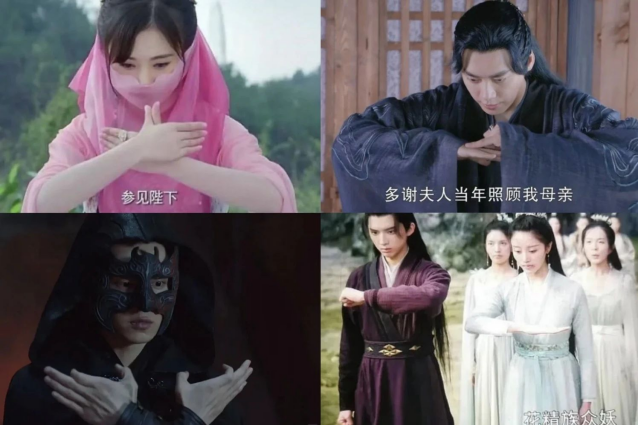
If you haven’t seen the various bowing postures in ancient – costume idol dramas (including xianxia dramas) and then watch the etiquettes in Strange Tales of Tang Dynasty (《唐朝诡事录》) and Jinxiu Anning (《锦绣安宁》), you’ll probably feel much more comfortable. After all, there’s a big difference between those with historical roots and those without, in terms of cultural depth.
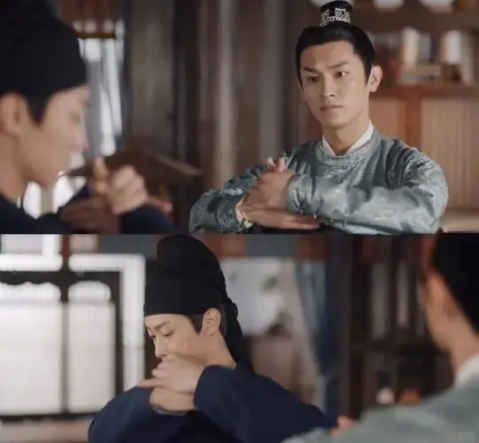
Ⅰ. The Cross – hands Salute
In recent years, the “cross – hands salute” has become a favorite in costume dramas set in the Tang and Song dynasties. Characters wearing resplendent Tang and Song Dynasty clothing perform this salute, adding authenticity to the historical portrayal. We’ve witnessed the cross – hands salute of the Tang Dynasty in films such as Chang’an (《长安三万里》) and Strange Tales of Tang Dynasty. It’s also omnipresent in Jinxiu Anning. From the poem by Liu Zongyuan (柳宗元) of the Tang Dynasty, “When entering the prefecture, one always bends the waist; when meeting people, everyone crosses their hands”, we know that the cross – hands salute was a common greeting etiquette in social interactions at that time. Those donning Hanfu would execute this salute gracefully, mirroring the refined social norms of the era.
The cross – hands salute was mostly used when standing, especially when replying. This etiquette gesture could be added. For example, in court audiences, formal meetings between officials, large – scale celebration ceremonies, etc. In these situations, the cross – hands salute was a standard etiquette movement that showed respect, humility, and politeness, reflecting the status and upbringing of the participants. In daily life, juniors would also perform the cross – hands salute to show respect to seniors, students to teachers, and subordinates to superiors. For instance, when juniors in a family greet their elders or students ask their teachers questions, they use the cross – hands salute to express their respect.
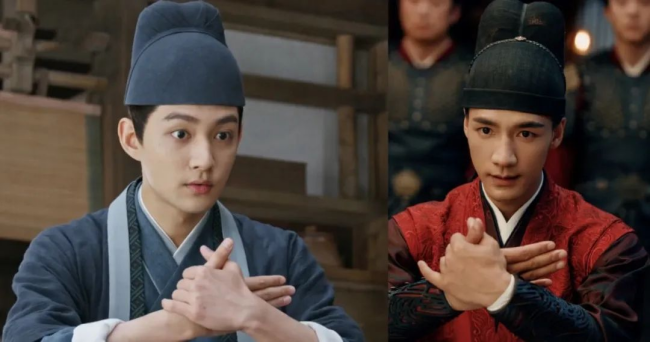
The “cross – hands” salute varied slightly in different dynasties. Initially, it was used among the nobility. As time passed, by the Tang and Song dynasties and later, the “cross – hands” salute gradually became extremely common and popular. This etiquette was no longer exclusive to the nobility; ordinary people also began to widely adopt it. Especially when showing respect to superiors or elders, the “cross – hands” salute became a commonly used form of etiquette.
Ⅱ. Differences in the Cross – hands Salute between the Tang and Song Dynasties
The standard movement of the cross – hands salute in the Tang Dynasty was as follows: Place both hands in front of the chest. The right thumb was held high, forming a right – angle with the other four fingers. The left hand was placed over the right hand, firmly grasping the right thumb while the little finger pointed towards the right wrist. This etiquette scene was vividly depicted in the mural of the tomb of Zhao Yi (赵逸) in Anyang from the Tang Dynasty. The figures in the painting were in the posture of performing the “cross – hands” salute with the left hand on top, firmly grasping the right thumb.
The details of the cross – hands salute in the Song Dynasty changed somewhat. Different from only the right thumb being raised in the Tang Dynasty, in the Song Dynasty’s etiquette, while the left hand firmly grasped the right thumb, the left thumb was sometimes raised as well. This cross – hands salute can be clearly seen in The Night Revels of Han Xizai (《韩熙载夜宴图》) and paintings from the Tang and Song dynasties. However, it can also be observed that the cross – hands salutes in the Tang, Five Dynasties, and Song periods were sometimes very similar, and there were no absolute differences (but it could also be due to the unclear nature of the paintings themselves, making it impossible to distinguish the structure).
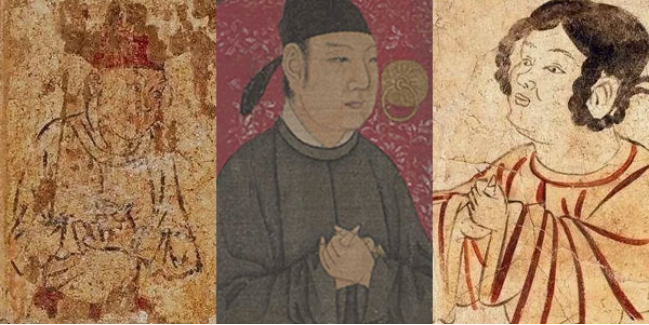
Some records can be referred to. In the Song Dynasty work Shilin Guangji (《事林广记》), it is recorded that “The method of performing the cross – hands salute is to firmly grasp the right thumb with the left hand. The little finger of the left hand points towards the right wrist. The four fingers of the right hand are all straight, and the thumb of the left hand points upward. When using the right hand to cover the chest, it should not be pressed too tightly against the chest. It should be about two or three inches away. This is the proper way to perform the cross – hands salute.”
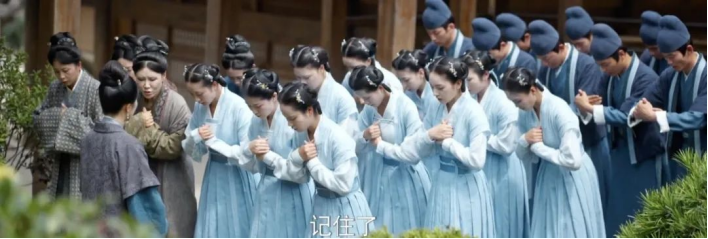
Wang Xuzhong (王虚中) in the Song Dynasty recorded in The Method of Teaching Children (《训蒙法》) that “When a child starts school at the age of six, they first learn the cross – hands salute. Firmly hold the right hand high with the left hand. The little finger of the left hand points towards the right wrist. The right hand is straight, and with the four fingers, the thumb of the left hand points upward. Just like using the right hand to cover the chest.”
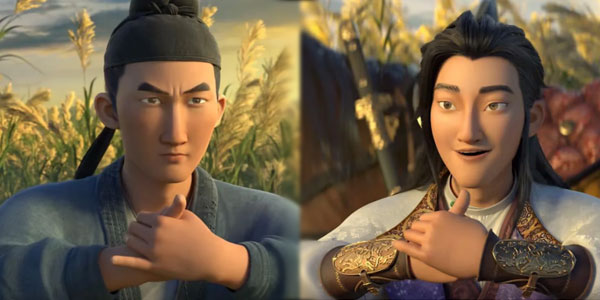
Ⅲ. Points for Attention
Moreover, in historical contexts where people wore Chinese apparel, after performing the “cross – hands” salute, the hands should remain crossed and not be separated immediately. The flowing sleeves and distinct cuts of Hanfu added a unique grace to this action. They need to continue to be placed in front of the chest and maintain this position until the mutual greetings are completed. The characteristic of this etiquette is that, unlike the cupping one’s hands in front of the chest or bowing with hands clasped salutes, where the hands can be naturally lowered after the salute is completed, the cross – hands salute requires the hands to remain crossed in front of the chest and not be casually lowered.
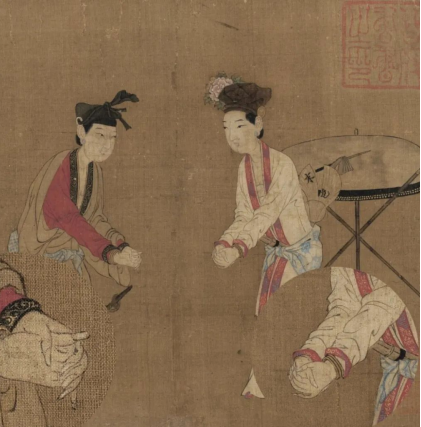
However, after all, we have always had formal and daily etiquettes such as perform the bow with hands clasped (行揖), kneeling and bowing (跪拜) for different occasions. If a drama uniformly uses the cross – hands salute for all occasions, large, medium, and small, even for large – scale ceremonies like recording family members’ names when entering a household, and when paying respects to ancestors, a more solemn form of bowing, such as the “Su Bai (肃拜)” should be performed. As recorded in Rites of Zhou: Spring Official – Chief of Prayers (《周礼·春官·大祝》), “Distinguish the nine types of bows. The first is the Qi Shou (稽首), the second is the Dun Shou (顿首), the third is the Kong Shou (空首), the fourth is the Zhen Dong (振动), the fifth is the Ji Bai (吉拜), the sixth is the Xiong Bai (凶拜), the seventh is the Qi Bai (奇拜), the eighth is the Bao Bai (褒拜), and the ninth is the Su Bai (肃拜), which are used for offerings and right – hand – side sacrifices.” If one wants to perform relevant etiquettes well, different etiquettes should be performed according to the occasion.
Of course, the specific movements and meanings of each type of bow here are all different. We won’t focus on interpreting them in detail this time. For those of you who are interested, you can wait for my upcoming explanations of some of China’s kneeling and bowing etiquettes. For now, let’s just consider them as the names of different types of bows.
In a painting, even if everyone is performing the cross – hands salute, the details of each person’s salute may vary. The most easily misunderstood part is the little finger that sticks out. In some paintings, it is not sticking out, while in others it is. It can be guessed that everyone’s hand shape and finger length are different, and the grasping situations are also different. So, there’s no need to be too particular about the details. As long as the posture is correct, it’s mainly about the comfort of the person performing the salute.
Summary
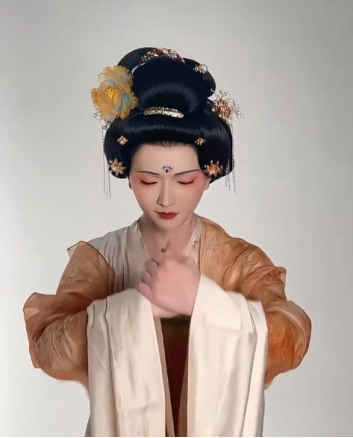
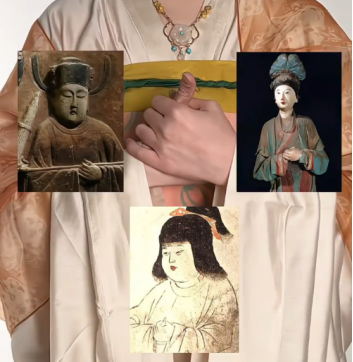
If you are wearing Hanfu to participate in a special offline Hanfu event, you can perform the cross – hands salute in an occasion with a strong traditional atmosphere. However, it would be awkward if the person opposite doesn’t know what the cross – hands salute is. Whether it’s social etiquette or daily life, isn’t it all about making yourself feel comfortable? So, whether to perform the cross – hands salute to others when meeting them completely depends on your mood.

Although adding the cross – hands salute to daily life can be really a bit complicated, compared to some strange saluting postures that seem to come out of nowhere, it’s already considered “minor trouble”. After all, the indiscriminate abuse of improper etiquette is a common and lazy practice in TV hanfu dramas.
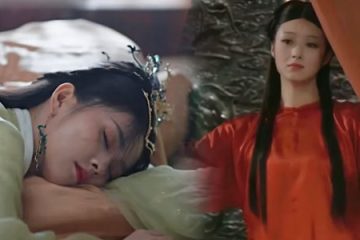
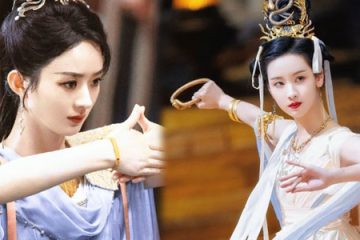
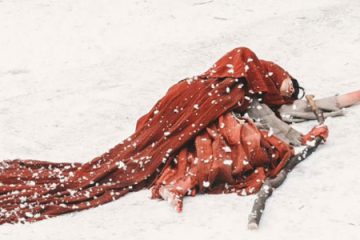
0 Comments